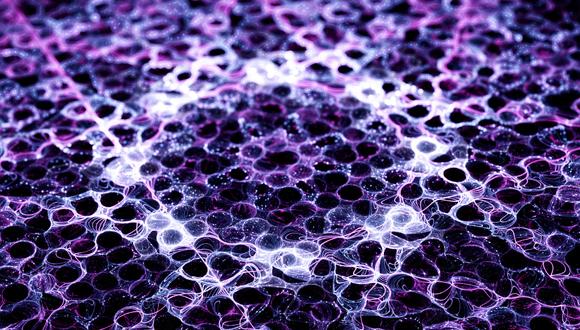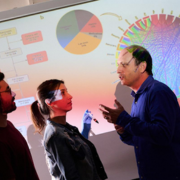TAU study: new optical materials break barriers
TAU researcher discovers novel nanoscale "metamaterial" could serve as future ultra-high-speed computing units
From computers, tablets, and smartphones to cars, homes, and public transportation, our world is more digitally connected every day. The technology required to support the exchange of massive quantities of data is critical. That's why scientists and engineers are intent on developing faster computing units capable of supporting much larger amounts of data transfer and data processing.
A new study published in Nature Photonicsby Tel Aviv University researchers finds that new optical materials could serve as the nuts and bolts of future ultra-high-speed optical computing units. According to the research, led by Dr. Tal Ellenbogen and conducted by group members Nadav Segal, Shay Keren-Zur, and Netta Hendler, all of the Department of Physical Electronics at TAU's School of Electrical Engineering and TAU's Center for Nanoscience and Nanotechnology, these "nonlinear metamaterials," which possess physical capabilities not found in nature, may be the building blocks that allow major companies like IBM and Intel to move from electronic to optical computing.
At his TAU lab, Dr. Ellenbogen studies the interaction between light and matter at the nanoscale level in order to explore underlying physical mechanisms, which can be used to develop novel optical and electro-optical components. "Optical metamaterials have been studied for their intriguing and unusual properties for the last 15 years," said Dr. Ellenbogen. "Our work shows that, with the proper design, they can also be used to develop new types of active optical components essential to the manufacture of ultra-high-speed optics-based computer chips."
Light and matter
In natural materials, the interaction between light and the material is governed by the chemical composition of the material. In the new optical materials, however, through the creation of fine nanostructures, the interaction can be controlled and new optical phenomena can be observed. When the strength of the interaction is not directly proportional to the strength of the light field, nonlinear optical effects kick in. These effects can be used to make active optical devices.
These artificial optical materials are sometimes referred to as optical metamaterials and their nanoscale building blocks are sometimes referred to as "optical meta-atoms." "Future on-chip communications systems are expected to change from relying solely on electronics to relying on photonics — that is, the qualities and mechanics of light — or hybrid electronic-photonic systems," said Dr. Ellenbogen. "These photonic on-chip communications systems will consist of active nonlinear nanoscale optical elements. Our research opens the door to consider nonlinear metamaterials as the active nanoscale components in future on-chip communications.
"By merging two disciplines in optics — metamaterials and nonlinear photonic crystals — we are opening the door to constructing novel active nonlinear devices based on metamaterials and to new fundamental studies altogether," said Dr. Ellenbogen. The researchers are currently exploring how to make the nonlinear interaction more efficient by using multilayered metamaterial structures and by examining different metamaterial building blocks.
All of the research was conducted at the Laboratory for Nanoscale Electro-Optics at TAU's Center for Nanoscience and Nanotechnology, and was supported by the Israel Science Foundation, the European Commission Marie Curie Career Integration Grant, and the Tel Aviv University Center for Renewable Energy. For this research Nadav Segal won the The Feder Family Award for Best Student Work in Communications.
This article was originally published by AFTAU.






